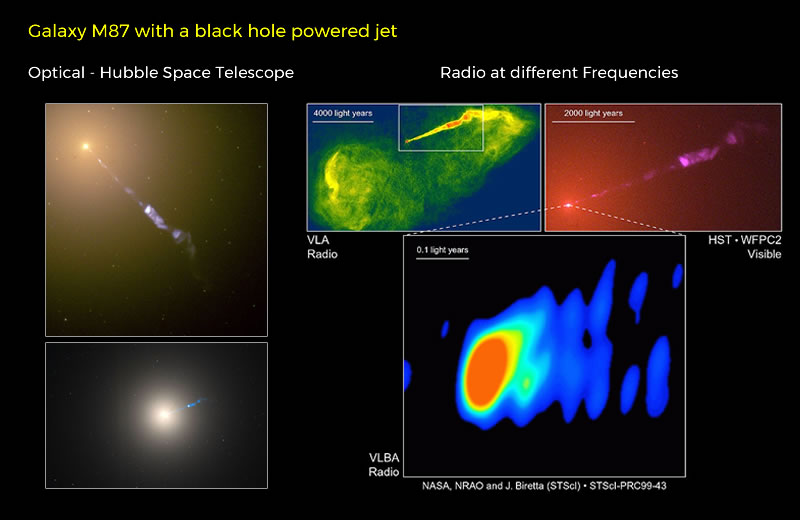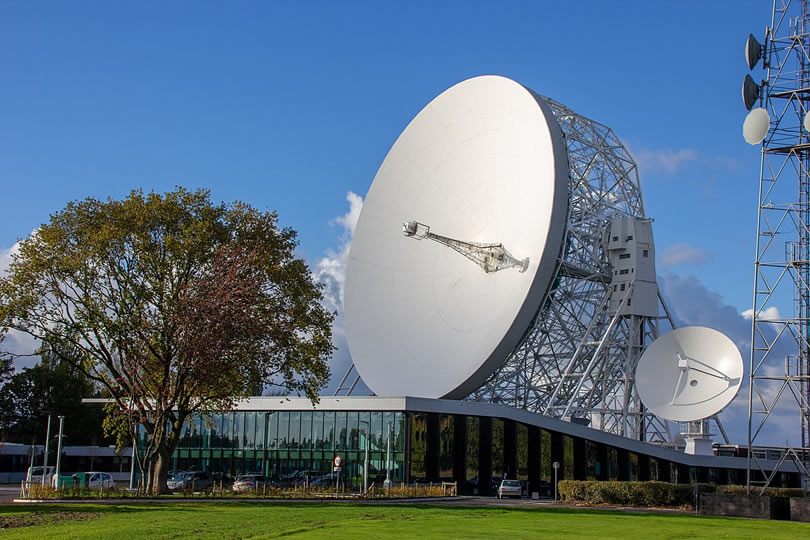Radio Telescopes
13.24 - Understand how a simple radio telescope operates13.25 - Understand why radio telescopes need extremely large apertures in order to maintain a useful resolution
13.26 - Understand how multiple radio telescopes can operate as an aperture synthesis system (array)
13.27 - Know that radio astronomy has been important in the discovery of quasars, jets from black holes, the structure of the Milky Way and protoplanetary discs
Radio waves travel at the speed of light. We can observe objects in the radio spectrum and clearly see objects obscured with dust or objects not possible to see in visible light. Radio telescopes let us gather and interpret radio waves. The most notable feature of them is that they are very large.
How they work
The main large dish is known as the primary reflector and needs to capture as many radio waves as possible. Radio waves are the largest.
It works by a similar principle to a telescope. A primary area gathers the information. The curve of the telescope or 'dish' focuses the waves at a secondary point.
The secondary receiver converts the waves into electrical signals which are then processed by a computer to produce images and data.
The larger the dish, the more waves to be collected and so the larger the resolution.
The surface of a radio telescope does not need to be as smooth as an optical telescope. Typically, they are made of metal and because they do not support a large lens and be built to be as large as possible.
Connectivity
Another advantage of radio telescopes is that they can be connected to other 'dishes' to give a greater resolution. This is called and aperture synthesis system and used the process of interferometry to combine signals. The VLA (Very Large Array) in New Mexico, USA is the largest radio telescope in the world because it links 27 radio telescopes together and its collective power is likened to seeing a tennis ball over 15,000km away.
Interference
They are susceptible to radio Interference which comes from a number of sources:
- Mobile Phone signals and Telecommunications
- Emergency Services Communication
- Air Traffic control
- Television and FM/AM signals
Discoveries
Cosmic microwave background radiation is arguably one of radio astronomies greatest discoveries along with quasars, radio galaxies and pulsars. Stars, the Milky Way and protoplanetary discs are all studies in depth by astronomers.
Radar
Radar works by transmitting radio signals and then measuring the time and distance to the reflected wave. From this we can send signals to the Moon and planets to measure how far away they are from us. On Earth we can measure and map the surface under the oceans. We can send orbiters to planets and build a map and measure their surface.

Did you know?
The largest radio telescope in Britain is the Lovell Telescope in Jodrell Bank near Manchester.
Did you know?
Some astronomers such as those at SETI (Search for Extra Terrestrial Intelligence) listen in at radio frequencies that they think other civilisations might use.
Links
- National Radio Astronomy Observatory How Radio Telescopes Work
- National Radio Astronomy Observatory What is Radio Astronomy?
- RadioSky Frequently Asked Questions About Radio Astronomy



.jpg)
 | © All Rights Reserved |
| © All Rights Reserved |